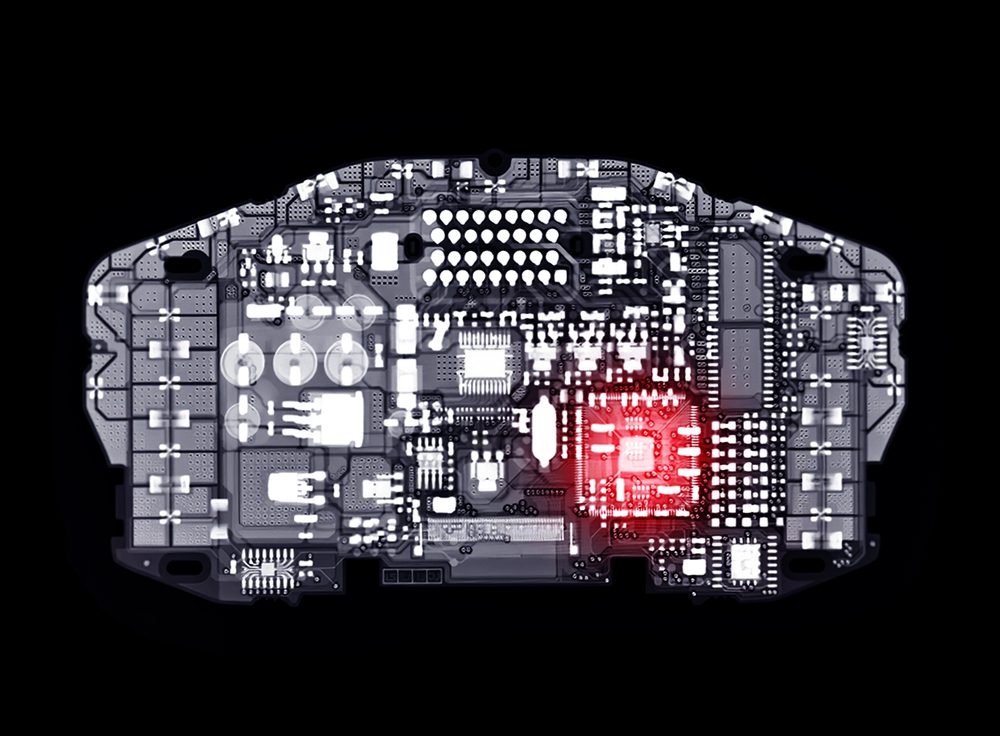What is the most common reason for engine warning light?
The engine warning light, also known as the check engine light, is a crucial indicator on your vehicle’s dashboard. When this light illuminates, it signifies that there is an issue with your car’s engine that requires attention. Understanding the most common reasons for the engine warning light can help you diagnose and address any potential problems promptly.
Common Reasons for Engine Warning Light
There are several common reasons why the engine warning light may come on, including:
1. Faulty Oxygen Sensor: The oxygen sensor monitors the level of oxygen in the exhaust gases. A malfunctioning sensor can lead to decreased fuel efficiency and increased emissions.
2. Loose or Faulty Gas Cap: A loose or faulty gas cap can trigger the engine warning light. It is essential to ensure that the gas cap is tightly secured to maintain proper pressure in the fuel system.
3. Malfunctioning Catalytic Converter: The catalytic converter helps reduce harmful emissions. If it fails, the engine warning light may illuminate, and your vehicle’s performance may be compromised.
4. Issues with Spark Plugs or Ignition System: Worn-out spark plugs or a faulty ignition system can cause misfires, leading to a lit engine warning light. This can result in reduced power and fuel efficiency.
5. Faulty Mass Airflow Sensor (MAF): The MAF sensor measures the amount of air entering the engine. If it malfunctions, it can impact the air-fuel mixture, causing engine performance issues.
6. Problematic EGR Valve: The Exhaust Gas Recirculation (EGR) valve recirculates exhaust gases back into the engine for emission control. If it becomes clogged or fails, the engine warning light may illuminate.
7. Issues with the Fuel System: Problems such as a clogged fuel filter, failing fuel pump, or malfunctioning fuel injectors can trigger the engine warning light.
What Should You Do When the Engine Warning Light Comes On?
When the engine warning light illuminates, it is essential not to ignore it. Here are some steps you can take:
- Check the gas cap to ensure it is tightly sealed.
- Inspect for any other noticeable issues such as leaks or strange noises.
- If there are no apparent problems, it is advisable to have the vehicle’s diagnostic codes read by a professional using an OBD-II scanner.
- Based on the diagnostic codes, a qualified mechanic can identify the specific issue and recommend the necessary repairs.
- Delaying necessary repairs can potentially cause further damage, increase repair costs, and even affect your vehicle’s safety.
Remember: The engine warning light serves as an early warning system for potential problems with your vehicle’s engine. Addressing the issue promptly can help prevent further damage and maintain the overall performance and longevity of your car.
It is important to note that the reasons mentioned above are not an exhaustive list, and there can be other less common causes for the engine warning light. Consulting a professional technician can provide a more accurate diagnosis and appropriate solutions for your specific vehicle.
In conclusion, the most common reason for the engine warning light is often attributed to issues with the oxygen sensor, gas cap, catalytic converter, spark plugs, ignition system, mass airflow sensor, EGR valve, or fuel system. When the engine warning light comes on, it is crucial to take action and have the issue diagnosed and repaired promptly to prevent further complications.
What is the most common fail on a MOT?
The MOT test, also known as the Ministry of Transport test, is an annual test conducted to ensure that vehicles in the UK meet the minimum safety and environmental standards. The test is mandatory for all vehicles that are over three years old. While the specific requirements may vary depending on the type of vehicle, there are some common failures that tend to occur across the board.
1. Lighting and signaling
One of the most common reasons for MOT failure is related to lighting and signaling issues. This includes headlights, taillights, indicators, and brake lights. It is important to regularly check and maintain the functionality of these components to avoid failing the MOT test.
2. Tyres
The condition and tread depth of your tyres are crucial for passing the MOT test. Bald or damaged tyres can not only result in an MOT failure but also pose a significant safety risk. Ensure that your tyres meet the legal requirements and replace them if necessary.
3. Brakes
Brake problems, such as worn brake pads or discs, can lead to an MOT fail. Regular maintenance and checks of your braking system are essential to ensure its proper functioning and increase your chances of passing the MOT test.
4. Suspension and steering
Faulty suspension components or issues with the steering system can also result in an MOT failure. It is important to have these systems inspected and repaired if necessary to ensure the safety and roadworthiness of your vehicle.
5. Exhaust and emissions
Excessive emissions or faulty exhaust systems are common causes of MOT failure. Regular servicing and maintenance, including checking the catalytic converter and exhaust pipes, can help prevent these failures.
6. Windscreen and wipers
A damaged windscreen or ineffective wipers can result in an MOT fail. Cracks or chips in the windscreen should be repaired, and wiper blades should be replaced if they are worn or leaving streaks.
7. Seatbelts
Seatbelts play a vital role in ensuring the safety of all occupants in a vehicle. If the seatbelts are damaged or not functioning properly, it can lead to an MOT failure. Regularly inspect your seatbelts for any signs of wear or damage and have them replaced if necessary.
8. Registration plates
Incorrectly displayed or damaged registration plates can result in an MOT fail. Ensure that your plates are clearly visible, securely mounted, and comply with legal requirements.
9. Fuel and oil leaks
Fuel or oil leaks can pose a significant safety hazard and result in an MOT failure. Regularly check your vehicle for any leaks and have them repaired as soon as possible.
10. Miscellaneous
There are various other factors that can lead to an MOT failure, such as faulty seat adjustments, horn malfunctions, or worn out wiper blades. Conduct regular checks on all aspects of your vehicle to minimize the risk of these failures.
Remember, proper maintenance and regular inspections of your vehicle can greatly increase your chances of passing the MOT test.



